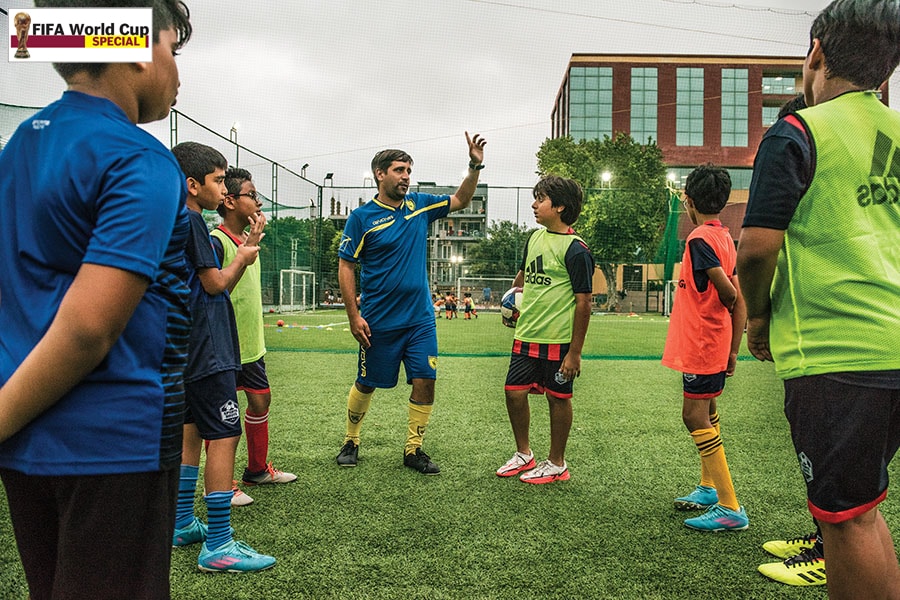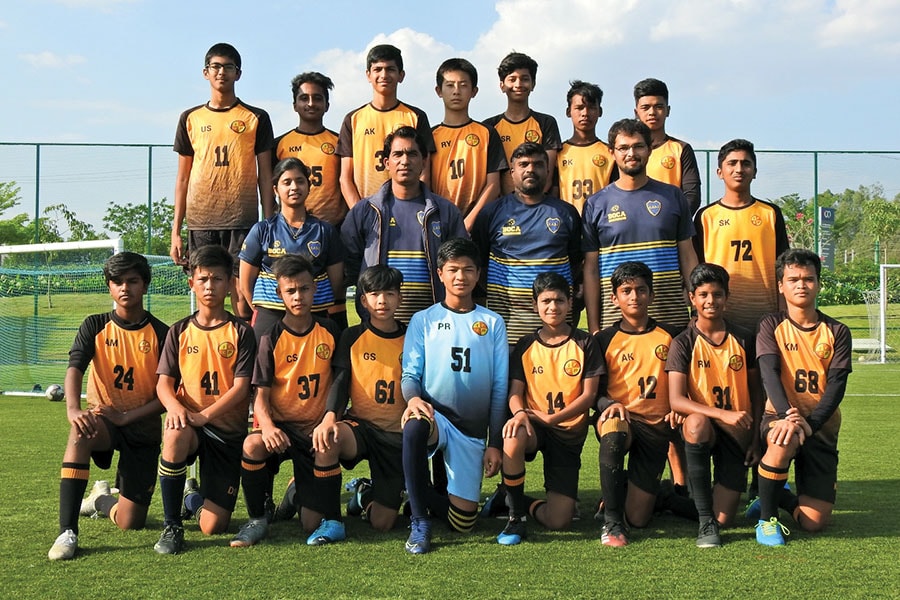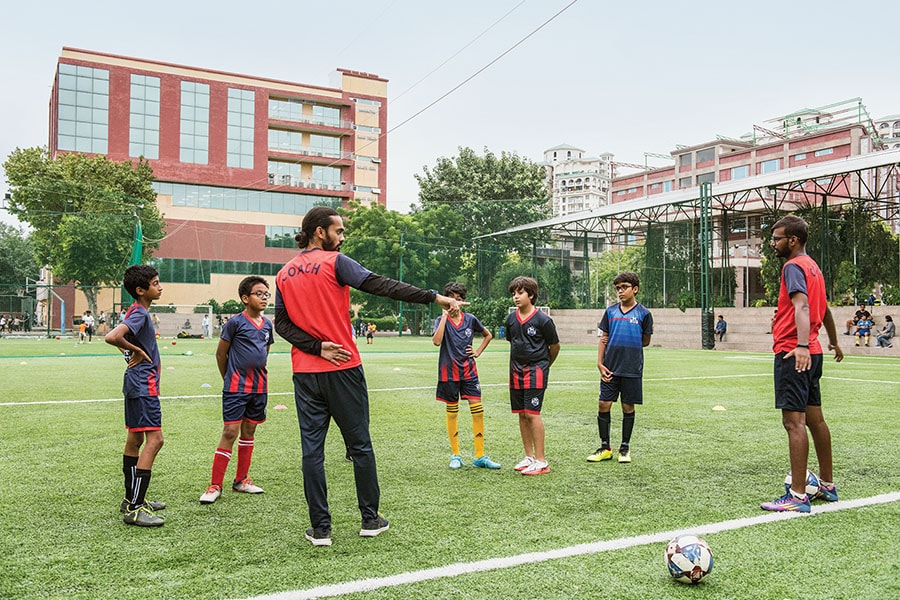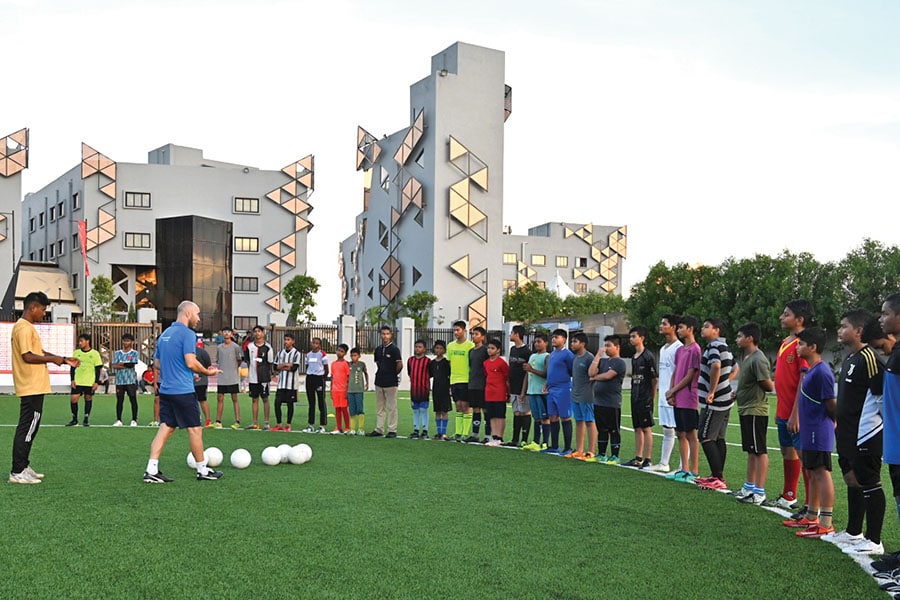
Dreaming big leagues: Can European elite clubs change grassroots football in India?
The recent influx of foreign clubs and leagues could help push Indian football in a new direction, but the effort has to go beyond being just a branding exercise and work towards changing the ecosystem and local football culture
 Davide Marchini (in blue jersey), a Uefa B licensed coach from Italy and technical director of Sports Roots, holds a session in Gurugram
Image: Amit Verma
Davide Marchini (in blue jersey), a Uefa B licensed coach from Italy and technical director of Sports Roots, holds a session in Gurugram
Image: Amit Verma
Sometime in the 2010s, Sunanda Das and Rajesh Mehrotra, professionals living across two halves of the country, were weighed down by a common problem: Of finding a suitable football training academy for their kids. “The programmes were unorganised, had only a few coaches, and many wouldn’t even start on time,” says the Bengaluru-based Das, who has held C-suite positions in telecom companies for two decades.
Mehrotra, who spent the first half of his career fashioning commercial deals for the sports industry for 24 years, found it even more galling that an insider like him too couldn’t find a grassroots sports programme that was structured, progression-led and age-appropriate. “Sports training, like academics, needs to be built step by step. Like a child would first be taught the basics of maths before moving on to complicated problems, a similar approach needs to be adopted for sports as well,” says Mehrotra, a resident of Gurugram.
When their search proved futile, Das and Mehrotra, both soccer fanatics, gave up their corporate careers and decided to stride into their second innings. In 2013, Das launched the Boca Juniors Football School in India, and Mehrotra the PSG counterpart the following year, bringing to India a playbook that has fostered greats like Diego Maradona, Gabriel Batistuta and Carlos Tevez on one hand, and Nicolas Anelka on the other.
While Das has expanded his programme, from recreational sports to an elite residential academy for kids with promise, Mehrotra ended the PSG licencing in 2019, but has continued his association with European football through Davide Marchini, a Uefa B licenced coach from Italy and the technical director of Sports Roots, the academy he has co-founded.
But not just PSG and Boca Juniors, the Indian grassroots landscape has, of late, seen an influx of foreign clubs and leagues—from Arsenal, FC Barcelona, Liverpool, and Atletico de Madrid to LaLiga, the Spanish professional league that comprises 42 clubs. While some clubs have eventually exited, like Arsenal and Liverpool, newer partnerships are unfolding with Sevilla FC tying up with FC Bengaluru United and Atletico returning to the Indian fold, after splitting with ISL franchise Atletico de Kolkata, to join forces with the Tata Football Academy (TFA). “We have decided to start preparing a business case for the creation of joint football schools in Bengaluru,” says Jose Maria Cruz, the CEO of six-time Uefa Europa league champion Sevilla FC, “We are also going to open in the city Sevilla FC’s first commercial delegation and office worldwide. We are finishing the project, and the office will be set up probably by the first quarter of 2023.”













